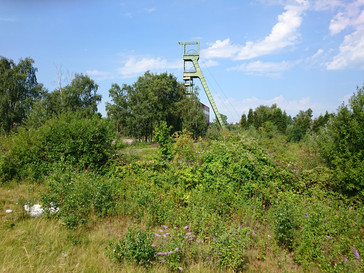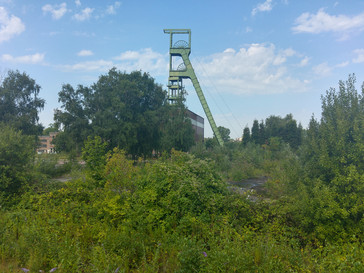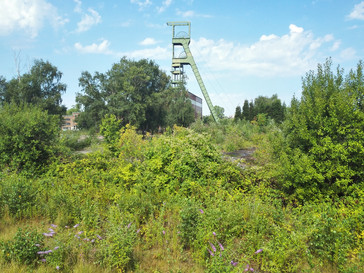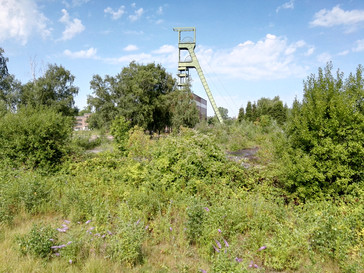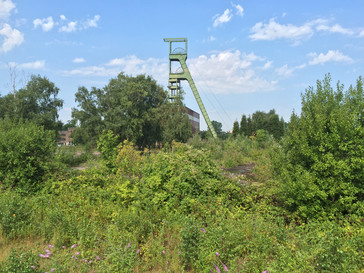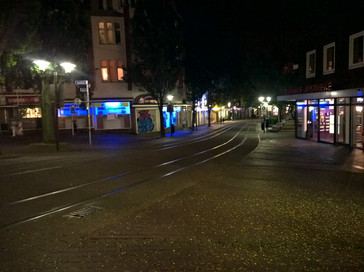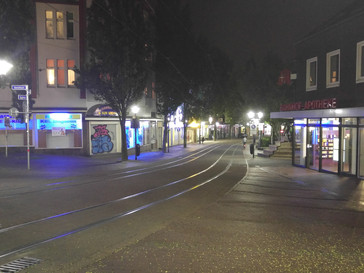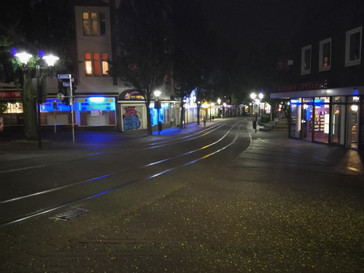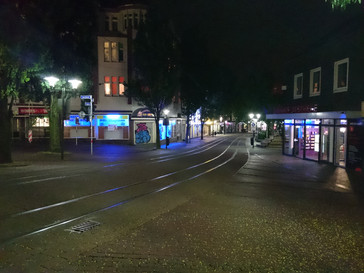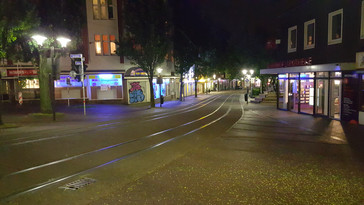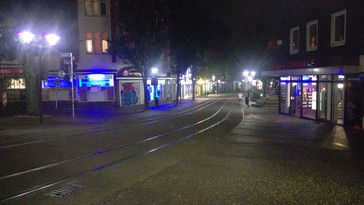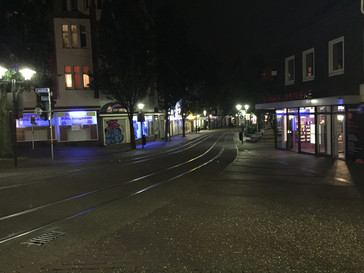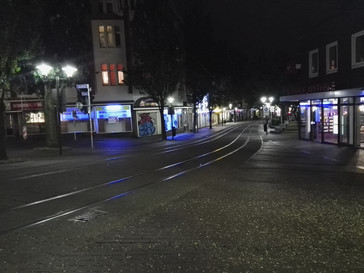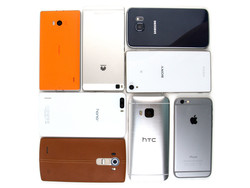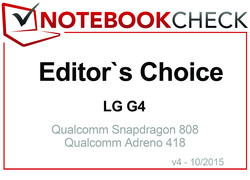The best Camera Smartphones in Comparison
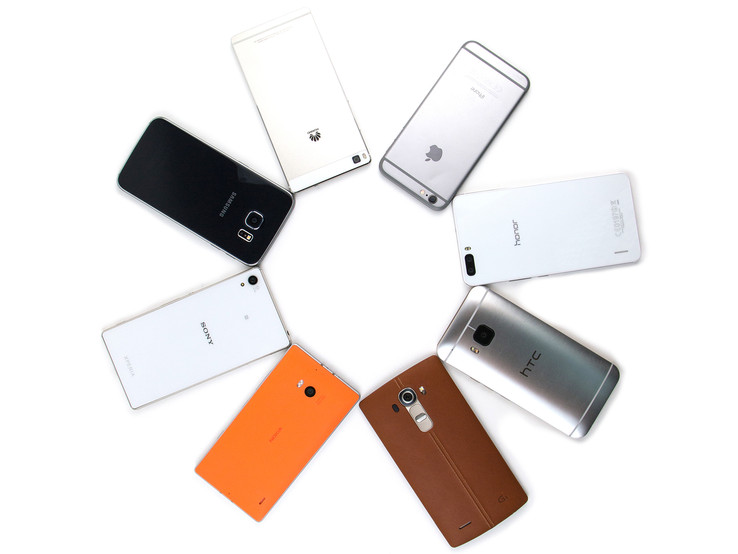
For the original German review, see here.
We evaluate the (rear) camera performance of eight current high-end smartphones. The new iPhone 6s is not included because it was not yet released when we took the sample pictures.
Besides the iPhone 6, we also include the Android devices Samsung Galaxy S6, LG G4, Sony Xperia Z3+, HTC One M9, Huawei P8 and the Honor 6+. The latter is the only smartphone in this comparison with a dual camera. The last contender is a Windows Phone device, the Lumia 930.
We summarized the most important technical specification in the following table, including the prices at the time of the comparison.
| Samsung Galaxy S6 | Apple iPhone 6 | LG G4 | Huawei P8 | Nokia Lumia 930 | Sony Xperia Z3+ | Honor 6+ | HTC One M9 | |
|---|---|---|---|---|---|---|---|---|
SoC |
Exynos 7420 (64-bit) | Apple A8 (64-bit) | Snapdragon 808 (64-bit) | Kirin 930 (64-bit) | Snapdragon 800 (32-bit) | Snapdragon 810 (64-bit) | Kirin 925 (32-bit) | Snapdragon 810 (64-bit) |
RAM |
3 GB | 1 GB | 3 GB | 3 GB | 2 GB | 3 GB | 3 GB | 3 GB |
Storage |
32/64/128 GB | 16/64/128 GB | 32 GB + MicroSD | 16/64 GB + MicroSD | 32 GB | 32 GB + MicroSD | 32 GB + MicroSD | 32 GB + MicroSD |
Operating System |
Android 5.1 | iOS 8.4 | Android 5.1 | Android 5.0 | Windows Phone 8.1 | Android 5.0 | Android 4.4 | Android 5.1 |
Camera Resolution |
16 MP | 8 MP | 16 MP | 13 MP | 20 MP | 20.7 MP | 2x 8 MP | 20 MP |
Aperture |
f/1.9 | f/2.2 | f/1.8 | f/2.0 | f/2.4 | f/2.0 | f/2.0 | f/2.2 |
HDR |
yes, auto, real-time | yes, auto | yes | yes | yes, rich capture | yes | yes | yes |
OS |
optical | electronic | optical | optical | optical | optical | electronic | electronic |
Price |
starting at 480 Euros | starting at 570 Euros | starting at 420 Euros | starting at 370 Euros | starting at 360 Euros | starting at 490 Euros | starting at 360 Euros | starting at 490 Euros |
Close-ups
We start the comparison with the quality of the close-ups. All sample pictures were taken from the same spot, but the actual picture can differ due to different aspect ratios, resolutions and focal distances. We always selected the automatic shooting mode.
We can quickly see differences in respect of the sharpness. Only the Sony Xperia Z3+ has some issues finding the correct focus point at the close distance, which is also noticeable on the picture with the slightly blurry blossoms. The stems, which are slightly further at the back, on the other hand are razor-sharp and show many details. We also like the white balance. Only the background does not have a nice soft focus, but appears a bit blurry.
We can see the highest sharpness on the Lumia 930, iPhone 6, Galaxy S6 and LG G4, but the LG G4 and the Lumia 930 left the best impression. The contours of the blossoms in the center are very exact, while we can see some blurry areas on the iPhone 6 and the Galaxy S6 at 100% magnification. The pictures of the Honor 6+ and Huawei P8 are a bit softer in the details, which are even more pronounced on the P8. This effect is much stronger on the HTC One M9, which creates an unwanted relief-like effect.
Most smartphones handle the white balance very well, but the shots of the iPhone 6 are a bit too cold and we can notice a blue cast within the comparison group. It is the direct opposite for the Lumia 930, because the color temperature is a bit too warm. The colors are very vivid on all devices and appear a bit oversaturated compared to the original, but the result looks realistic. The Honor 6+ also selects a contrast that is slightly too high.
Samsung’s Galaxy S6 has a slight edge over its rivals in terms of close-ups in our opinion, closely followed by the LG G4 and the Lumia 930. The S6 does not produce the sharpest picture, but the overall result leaves the best impression.
Environment Shots with HDR
The second part of the comparison is about environment shots under daylight with active HDR. The actual picture can once again differ due to different aspect ratios, resolutions and focal distances. We always selected the automatic shooting mode.
The most noticeable result is the picture with the Lumia 930, because it shows the typical features of an HDR picture (High Dynamic Range). We want to note though that it is possible to switch between this very artificial effect to a more natural presentation directly in the camera app of the Lumia. This means you can also use it as an artistic effect. You can even take between three and seven individual pictures in a DNG format and then merge them manually on a PC later.
The iPhone 6 shows the weakest HDR effect; it mainly uses this feature for backlight compensation, but you can hardly see higher dynamics compared to the picture without HDR.
The best result in this scenario is provided by the Sony Xperia Z3+. It shows a wider dynamic range and it still manages to offer a high amount of details. Both the LG G4 and the Galaxy S6 also create good pictures, but we can see blurry contours on the latter when we zoom in, while the G4 has some issues with the bright environment.
The One M9 once again has some problems with comparatively blurry pictures. The Honor 6+ and the Huawei P8 fall slightly behind the other rivals as well, but the P8 in particular is pretty close to the quality of the S6. It is a bit unfortunate that the Chinese smartphones do not offer an automatic HDR mode; instead, it has to be activated after the launch of the camera app.
The winner in this category is the Xperia Z3+, but the LG G4 and the Galaxy S6 also produce good results and are on par. The Lumia 930 gets a small bonus point for its diversity and the additional features, which are provided by the adjustable bracketing.
Panoramas
Panoramas can be impressive and capture a nice environment from a special perspective. This feature has been available for a while now on many smartphones, but it is often an issue to merge the individual shots together. Fortunately, a lot changed in the recent past; almost all comparison devices use a continuous pan, which allows panoramas between around 170 and 340 degrees. The maximum width varies between the individual models. Only the Samsung Galaxy S6 manages almost a full rotation. The Lumia 930 on the other hand is the only smartphone with individual shots, so two up to five pictures are merged into one single picture.
The quality differs quite a lot. Because of the panning shot, it is difficult to get a sharp picture and it is possible that straight elements like handrails, for example, are offset. The lighting also changes continuously during the turning, which is another big challenge.
The best panoramas are taken by the iPhone 6. The pictures are comparatively sharp and show the best performance in respect of the illumination. Both the LG G4 and the Galaxy S6 have some issues with the high brightness, but also manage good results. Those three devices have an edge over the other competitors particularly in terms of sharpness. They are followed by the Huawei P8, Honor 6+ as well as the Lumia 930, which produce decent results as well, but have more issues with the lighting. The Xperia Z3+ does not manage truly good pictures; we can see small artifacts and details are blurry. Those are extreme in the case of the HTC One M9, where the panoramas appear smudgy at some points. Individual areas with grass will be just shown as green areas.
Low-Light
Low-light situations are a challenge for every camera, especially for compact cameras and smartphones with their small sensors, although the latter are getting better. The flash is deactivated for the sample shots, so the remaining ambient lighting has to be sufficient for the smartphones. It was already night when we took the pictures and they were once again taken from the same spot. There can still be differences due to the aspect ratios, resolutions and focal distances.
Devices with a wider aperture or smaller f-number, respectively, should have an advantage, since the sensor captures more light at the same shutter speed. Shorter shutter speeds also reduce possible camera shake. The smartphones with an optical image stabilizer (OIS) should have another advantage. At least in theory, but the software plays an important role as well, because it has to calculate the best ratio between light sensitivity (ISO) and exposure time.
The LG G4 (f/1.8) has the widest aperture, the smallest lens is used on the Lumia 930 (f/2.4). You can immediately see the difference between the two. The picture of the G4 is much brighter and has more depth, while dark areas merge into black on the Lumia. You cannot see, for example, the treetops anymore. The picture has a higher contrast in return, while the G4 suffers from a slight gray hue. A closer look at the details shows that the sharpness of the LG G4 is still relatively good under these difficult circumstances. You can still see and read writing pretty well. Even the street name is comparatively clear, while you cannot see it at all in the picture of the Lumia 930. The lighting of the Galaxy S6 looks more balanced at first, but you notice that the details are affected when you have a closer look. The performance of the Huawei P8 is also decent, but you have to live with compromises in terms of the details.
The noise reduction is brought to its limits under these lighting conditions in general. Picture noise and aberrations cannot be avoided. Those effects are even more pronounced on the remaining devices. Better pictures are possible when you can use a tripod and longer exposure times, which means the smartphone needs a manual mode. The G4 in particular offers very comprehensive settings, so this smartphone is the best device for low-light pictures. Similar options can be found on the Galaxy S6, Xperia Z3+ and the Lumia 930, but they differ in terms of possible variations. While the G4 can expose up to 30 seconds, it is only possible for 10 seconds on the S6. A basic rule for good pictures at night is to use a tripod and dedicated camera instead. However, flagship smartphones have improved adequately enough if no alternative is available.
Flash
All have one, but nobody talks about it: the flash. It is the only way to take a picture in the dark and persons can be well illuminated at a short distance. The problem is usually that contours are shown too sharp and that affects the white balance. We took a picture of a statue at a church at night. On the left side is the result without the flash, on the right side with it. The distance is around two and a half meters (~8 feet).
We can already see big differences when we look at the smartphone displays, because not all devices manage to show the statue. We did not see anything on the Lumia 930, while we could at least see the contours on the other devices. Only the LG G4, Huawei P8 and the Galaxy S6 provided a decent view.
The Galaxy S6 in particular manages a good white balance. Colors are too warm on the LG G4, while the Xperia Z+ is very cool. The LG G4 produces the best quality. The contours are very clear and you can hardly see any picture noise. Also decent are the Galaxy S6 and the Lumia 930, but there is already visible picture noise. The Xperia Z3+ and the iPhone 6 are a bit better than the P8 and the Honor 6+ in this scenario, where the picture noise is more pronounced. The results are also influenced by the performance of the different LED flashes.
Verdict
The LG G4 and the Samsung Galaxy S6 are neck and neck in this comparison, but the G4 comes out as the winner from our point of view. Still, the decisions in the individual categories are very close and the winner is not perfect by any means, either, there is still room for improvements. The light sensitive smartphone has small issues with overexposure under sunlight, but this is mainly a problem in the automatic mode. You can get better results when you use manual mode. The winner is particularly convincing in respect of the dynamic range and the sharpness.
The models from Huawei manage pretty consistent results in the middle of the pack. The Honor 6+ and the P8 manage good results in every situation, but cannot set any records. The iPhone 6 still takes good pictures, but is not one of the best devices in low-light situations. This does not really change with the iPhone 6s or 6s Plus, respectively. You can notice the age of the Lumia 930 a bit. The small aperture affects the low-light performance, but the smartphone still takes the sharpest images and can even create DNG files in the automatic mode, while the Android competition can only take them in the manual mode. Far behind is the HTC One M9, which cannot convince against the rivals in any category and is one up to two classes behind the rivals.
The LG G4 currently has the best camera in a smartphone.
You can notice that the Sony Xperia Z3+ has a lot of potential. We are already eager to see the new Z5-generation. According to the manufacturer, it will be equipped with the world’s best smartphone camera. The Lumia 950 might also be able to beat the rivals, but the LG G4 is currently the benchmark, if you want a camera that fits in your pocket.












